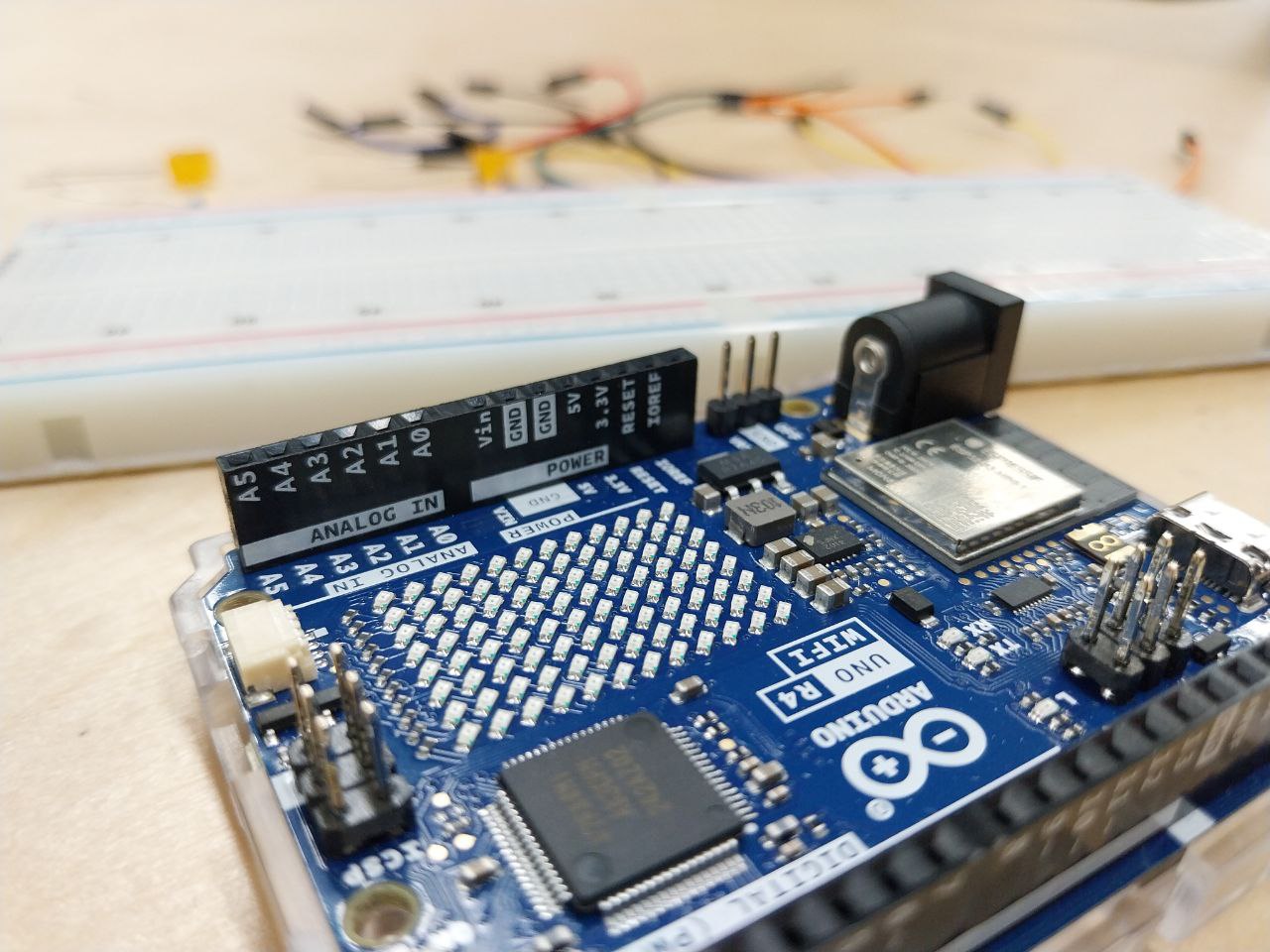Assignment
For my first assignment, I tried to establish a connection between two LED lights and a switch to the Arduino controller. The objective was to design a functional circuit where pressing the switch once would illuminate the first LED, a second press would activate the second LED while keeping the first one lit, and a third press of the switch would turn off both LEDs simultaneously. And it worked! First, I started by creating a counter variable that counted the times I pressed the switch and used the modulo that only counted up to 3, so that every time I clicked the switch for the fourth time, the cycle repeated. At the beginning, I had some difficulties because I didn’t know how to create a condition for the system to react only when the button’s value changed. I did some searching on the Physical Computing website (https://learn.newmedia.dog/tutorials/arduino-and-electronics/arduino/digital-io-input-changed/) and found a solution among the tutorials: I needed a variable to check the button’s value. After several trial and error attempts, I realized that it was necessary to add a condition that the button’s value should not be zero, as the command would still trigger even when I released the button.
Images
Some images of the breadboard circuit:
Code
Here’s the code I wrote:
int buttonState = 0;
int firstlight = 9;
int secondlight = 6;
int buttonChange = 0;
int buttonCounter = 0;
void setup(){
// Arduino setup code here to run once
pinMode(firstlight, OUTPUT);
pinMode(2, OUTPUT);
pinMode(secondlight, OUTPUT);
}
void loop(){
// Arduino loops repeats as long as there is power
buttonState = digitalRead(2);
if(buttonState != buttonChange && buttonState != 0)
{
buttonCounter = (buttonCounter + 1) % 3;
}
if(buttonCounter == 0)
{
digitalWrite(firstlight, LOW);
digitalWrite(secondlight, LOW);
}
else if(buttonCounter == 1)
{
digitalWrite(firstlight, HIGH);
digitalWrite(secondlight, LOW);
}
else if(buttonCounter == 2)
{
digitalWrite(firstlight, HIGH);
digitalWrite(secondlight, HIGH);
}
buttonChange = buttonState;
delay(10);
}
Video
This is the final result!



